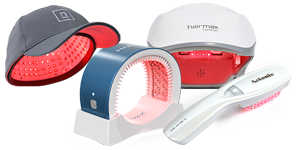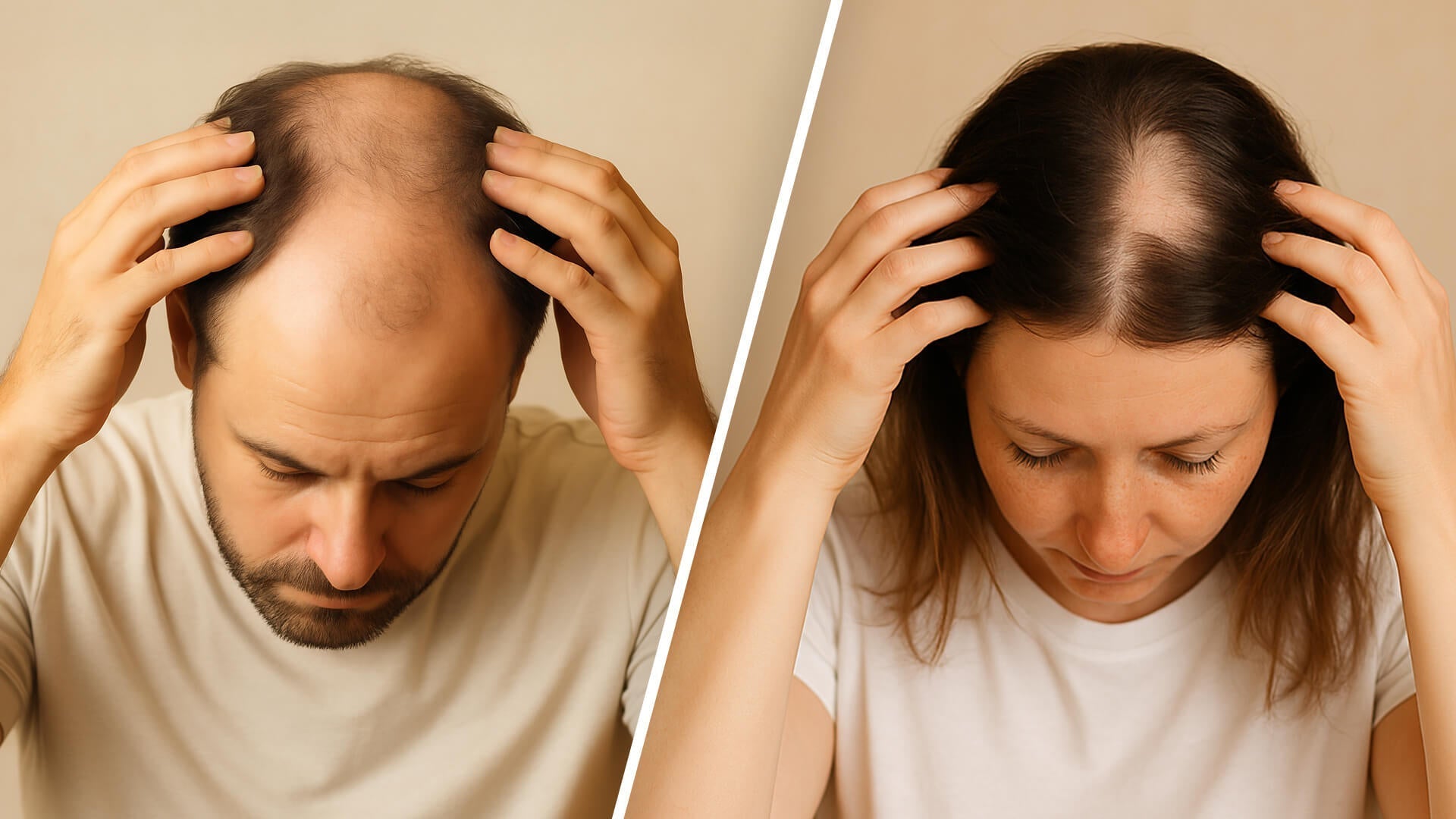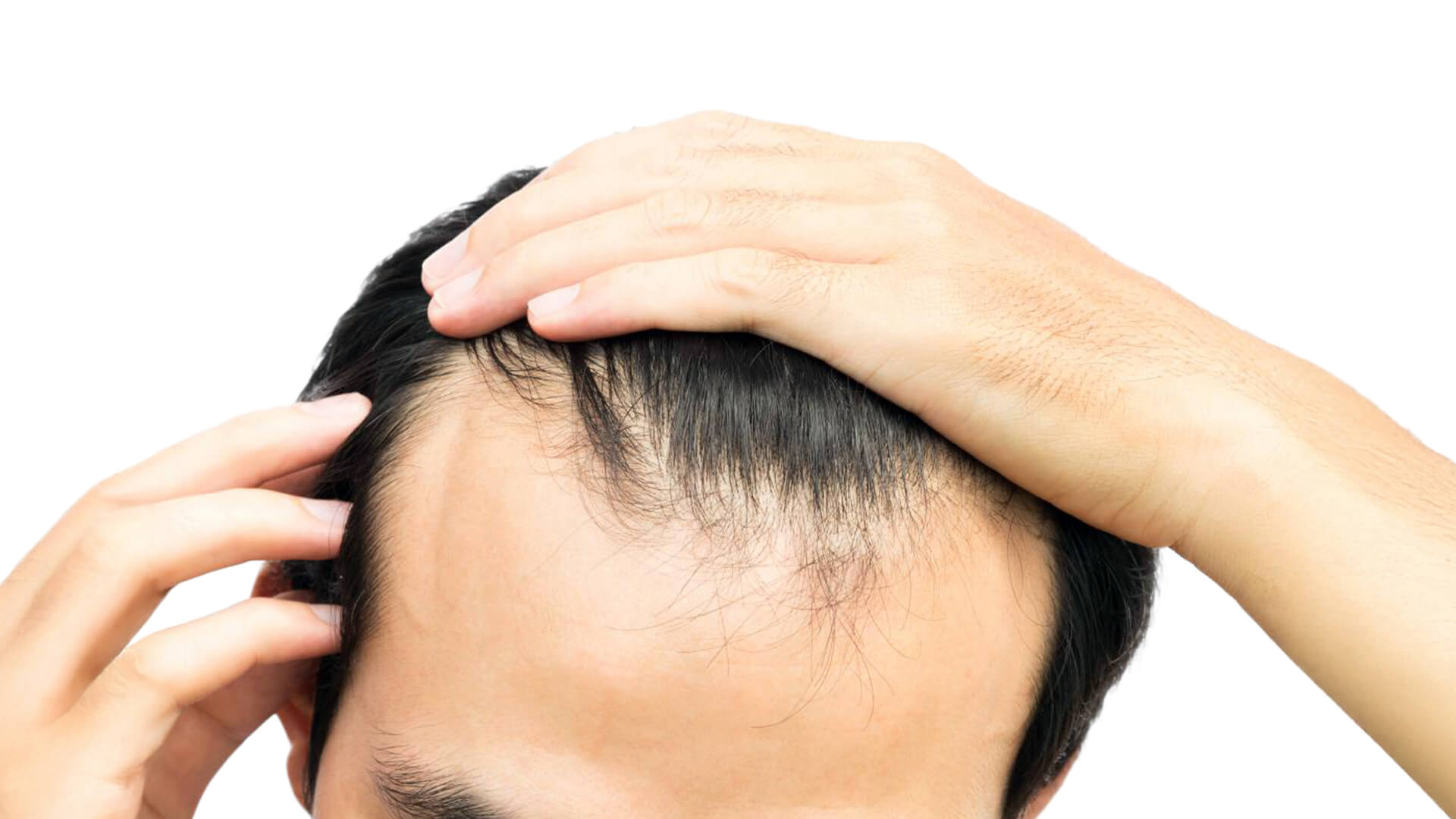Authored by: Yuliia Chorna, Dermatologist and Trichologist
Hair loss is a concern that affects many men and women. Recognizing the presence of hair loss and understanding its stages is an important step towards acknowledging the problem and initiating appropriate treatment. In this article, we will discuss specific ways to identify hair loss and classify its stages, catering to the general public.
Determining whether you are experiencing excessive hair loss can be challenging, as it is normal to lose up to 100-150 hairs per day. However, self-diagnosis can help distinguish between normal and excessive hair loss.
So, how can you determine if you are experiencing pathological hair loss?
The first step is to assess the volume of hair you are losing. If you notice a significant amount of hair on your pillow, in the shower, or on your comb, and if your hair has noticeably thinned, it may indicate a hair loss problem.
Another method you can employ is a simple home test known as the Pull Test. This test allows you to evaluate the degree of hair loss and determine whether action should be taken. It is important to note that this test does not replace professional consultation with a Trichologist but can serve as an initial step.
The technique involves taking a small strand of hair (approximately 50-60 hairs) in the morning before washing or combing, and gently pulling it upwards (this should not be painful). Then, count the number of hairs that remain in your hand.
If fewer than 5 hairs are left, it indicates the absence of active hair loss.
If 5 to 10 hairs remain, it signifies moderate hair loss.
If more than 10 hairs remain, it indicates severe hair loss that requires a comprehensive approach to treatment.
However, it is important to understand that certain types of hair loss, such as androgenetic alopecia, may not be accompanied by active hair loss but can still involve thinning and a reduction in hair density. Therefore, if you experience symptoms of thinning and reduced hair density, even if the Pull Test does not indicate active hair loss, it is recommended to consult a Trichologist for a more detailed diagnosis and treatment plan.
The Role of a Trichologist
Throughout the article, I have mentioned a specialist with a rare profession called a Trichologist. Some of you may be hearing about this profession for the first time. A Trichologist is an expert who focuses exclusively on hair and scalp issues. They conduct thorough examinations and diagnostics to determine the causes of hair loss and develop an individualized treatment plan. The trichoscope, a specialized device used to examine the hair and scalp, is their primary tool. Additionally, trichoscopy play a crucial role in monitoring the positive or negative progress of treatment results.
Classification of Hair Loss Stages
To determine the stage of hair loss in androgenetic alopecia, the Norwood Scale for men and the Ludwig Scale for women are utilized. These visual scales depict the degree of hair loss and aid in identifying the stage of the problem:
Norwood Scale for Men:
Stage I: Minimal hair loss along the hairline.
Stage II: Hair thinning on the frontotemporal area.
Stage III: Hairline recession on the temples and vertex.
Stage IV: Further recession of the hairline on the temples and vertex.
Stage V: Hair loss on the vertex with sparse hair on the temples.
Stage VI: Sparse hair areas on the temples and vertex merge.
Stage VII: Only a strip of hair remains on the back of the head.
Ludwig Scale for Women:
Stage I: Thinning of hair in the central part.
Stage II: Increased hair thinning on the upper part of the head.
Stage III: Further hair thinning, maintaining the frontal hairline.
Stage IV: Significant hair loss on the upper part of the head.
Hair loss persisting for more than 6 months is termed chronic, and it becomes more challenging to halt. Therefore, seeking early consultation with a Trichologist or Dermatologist and receiving appropriate treatment can significantly impact the outcomes and preservation of your hair.
The Role of the Hairmax Laser Device
Here's a little secret: if you are unable to immediately consult a Trichologist or Dermatologist, there are options available to support and strengthen your hair. The most accessible and effective option is low-level laser therapy using the Hairmax device. Hairmax Laser devices reverses thinning, strengthens hair, and stimulates healthy new growth. This painless and convenient procedure can be conducted in the comfort of your home at a time that suits you.
However, I want to emphasize that even if you use Hairmax, it is still recommended to consult a specialist for a more accurate diagnosis, development of an individualized treatment plan, and regular monitoring of results on your path to hair restoration.
Stay healthy! Yuliia











